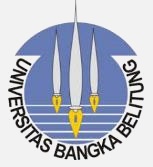Mapping the Potential of The Old City Tourism (Study of the History, Region And Cultural Value of The Old City on Bangka Island)
DOI:
https://doi.org/10.33019/berumpun.v2i1.18Kata Kunci:
Local Herritage, Old City Potential, Social MappingAbstrak
This research is entitled Mapping the Tourism Potential of the Old City (Study of the History, Region and Cultural Value of the Old City on Bangka Island). The research objective was to map the tourism potential of the old city in Bangka Island, namely Belinyu and Muntok Districts. Overview this social mapping is divided into three aspects which include history, territory and cultural values. The problems in this study are formulated in three main questions, namely (1) How is the distribution of the old cities of Muntok and Belinyu based on Chinese, Malay and European clusters? (2) How does the distribution of the Chinese, Malay and European clusters affect the tourism promotion of the old city in Muntok and Belinyu? (3) How does Toponimi affect the tourism promotion of old cities in Muntok and Belinyu?The location of the study was conducted in Belinyu and Muntok Districts. The consideration is based on the search results of secondary data showing that these two regions were formerly known as the central areas of the Dutch colonial government (Muntok) and the center of tin mining activities (Belinyu).The research method used is descriptive qualitative research with social mapping techniques. Sources of data in this study include primary and secondary data. Primary data is obtained by means of interviews and direct observation from the speakers. Secondary data was obtained from reference books, research journals, and references through the internet that were related to the tourism potential of the old city.
Unduhan
Referensi
Bungin, Burhan. 2003. Analisis Data Kualitatif. Jakarta: Rajawali Pers.
Cipta, Hendra. 2017. Kawasan Ekonomi Khusus dan Potensi Pariwisata Provinsi Kepulauan Bangka Belitung. Kawasan Ekonomi Khusus dan Pariwisata. Jurnal Tawshiyah volume 12 no. 1 Tahun 2017.
Kadarwati, Atik. 2008. Potensi dan Pengembangan Wisata Kota Lama Semarang sebagai Daya Tarik Wisata di Semarang.
Kamonkarn, Ambua., dkk. (2008). Toponymy, Landform and Geographical Analysis that Influence the Community’s Cultural Economics and Eco Tourism: Case Study in the District of Muang, Mae Chan, Mae Sai, Chiang Sean, Chiang Khong, Wieng Kaen, and Teoung, Chiangrai.
Lynch, Kevin 1972. What Time is this Place?. MIT Press. ISBN 0-262-12061-5.
Lynch, Kevin. 1960. The Image of the City. Cambridge MA: MIT Press. OL 5795447M.
Netting, F. Ellen, Peter M. Kettner dan Steven L. McMurtry (1993), Social Work Macro Practice, New York: Longman.
Perdana, Aji Putra. 2017. “Toponim, Sejauh Mana Peran Bahasa dalam Penamaan Unsur Geografi”. Detik.com
Refni Yulia, Meri Erawati, Gusti Asman, Noriyasman. 2017. Revitalisasi Kawasan Kota Tua Padang Sebagai Salah Satu Alternati Wisata Sejarah di Kota Padang. Jurnal Bakaba. Volume 6, Nomor 2, Desember 2017: 17-23.
Slamet, Yulius. 2006. Metode Penelitian Sosial. Surakarta: UNS Press.
Soeprapto dan Sumarah, Sri Rahayu. 2002. Metode Penelitian Kualitatif. Jakarta: Universitas Terbuka.
Sugiyono. 2007. Memahami Penelitian Kualitatif. Bandung: Alfabeta.
Yulianto, Agus. 2018. Strategi dan Arah Kebijakan Pengembangan Daerah Kepulauan. Republika Online. http://www.republika.co.id/berita/jurnalismewarga/wacana/18/01/09/p2aks3396-strategi-dan-arah-kebijakanpengembangan-daerah-kepulauan.
Pemprov Kepulauan Bangka Belitung. (2018). 12 Oktober 2018. http://www.visitbangkabelitung.com/content/kampung-tengah-belinyu.



